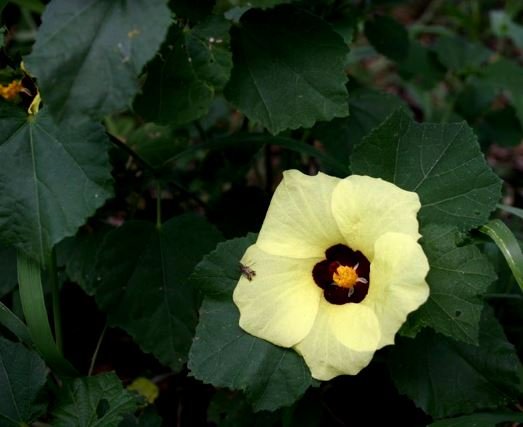Hibiscus calyphyllus in the Blouberg Nature Reserve

Author: Ivan Lätti
Photographer: Eric Aspeling
The slightly angular lobes of Hibiscus calyphyllus leaves have shallowly toothed to scalloped margins. Faint cream leaf midribs and lateral veins ascend across the dark green blades that have a dull shine on their finely velvety surfaces. The veining is sunken on the upper leaf surfaces, some net-veining sometimes visible. The long petioles join the leaf between two rounded basal lobes.
The plants specific name, calyphyllus, is derived from the Greek words kalux meaning cup and phullon meaning leaf, possibly referring to the cup-shaped outline of many of the leaves.
Maroon to black rounded patches occur on the bases of the pale petals that have irregularly sinuate upper margins. The eye of the corolla is sometimes redder, not always as dark as in picture.
The bulge of the dense cluster of deep yellow anthers around the staminal column is exceeded by the maroon style and stigma. Whitish gaps between the wedge-shaped petal bases in the corolla cup are visible in picture.
H. calyphyllus has several common names, one of them being lemonyellow rosemallow.
The plant is sometimes eaten by rural people when food is scarce (Manning, 2009; Pooley, 1998; iNaturalist).

